Low density lipoproteins - "bad cholesterol. Increasing LDL cholesterol: analysis and reasons for rejection
A substance such as cholesterol protects intracellular structures from the effects of free radicals. The destructive effect of the latter can lead to disease. When a person has normal level cholesterol, no pathologies arise. How is an increase or decrease determined? The answer is in the instructions below.
What are low density lipoproteins
Cholesterol is a member of the steroid group. Blood contains it in the composition of compounds with proteins that perform a transport function. This combination is called lipoproteins or lipoproteins. A small part of this substance is still free. Such cholesterol is considered common - it does not play a decisive role in the development of cardiac ischemia and other pathologies associated with the cardiovascular system. Among the more important forms of cholesterol are:
- HDL cholesterol, i.e. lipoproteins high density. This type is considered "useful".
- LDL cholesterol, i.e. low density lipoproteins. This form is "bad".
About 70% of the total cholesterol in blood plasma is LDL. It is characterized by the fact that it is able to linger on the walls of blood vessels for a longer time, compared with HDL. For this reason, an increase in the content of such cholesterol leads to excessive accumulation in the form of atherosclerotic plaques and various diseases related to of cardio-vascular system.
Blood test for cholesterol and lipid spectrum
If a referral from a doctor includes a word such as lipid profile, then you have been prescribed:
- blood test for total cholesterol;
- study of low density lipoproteins;
- study of high density lipoproteins;
- triglyceride analysis.
Based on the decoding of the study, the doctor has important indicators that will help him assess the patient's condition, as well as determine the nature of the course or the risk of developing diseases of the liver, kidneys, heart or autoimmune pathologies. A blood test only for cholesterol does not carry as much information as a lipid profile, therefore it is used only in determining the effectiveness of treatment.
How to take a cholesterol test
For the reliability of the result, the analysis requires proper preparation which is shown to children and adults. The recommended time for blood sampling from a vein is in the morning. The analysis itself is taken on an empty stomach, and on the eve it is better to exclude physical activity and fatty foods. You can make it in a biochemical laboratory, public or private. In the latter, the price of the study is about 200 rubles, so it is better to immediately choose to study everything lipid spectrum, the cost of which is approximately 500 rubles. Doctors recommend 1 time in 5 years to apply for such an analysis, and after 40 years it is better to do it every year.
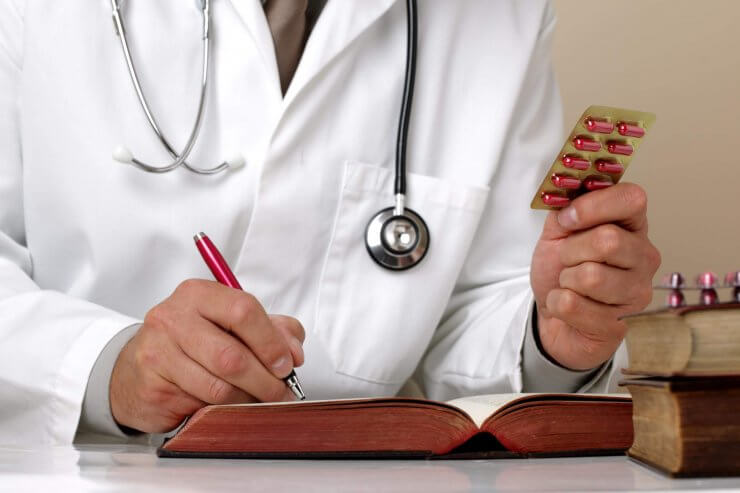
Norm of cholesterol in the blood
Lipidogram reflects several indicators:
- the level of total cholesterol - total cholesterol;
- HDL cholesterol content - HDL cholesterol;
- the amount of LDL cholesterol - LDL cholesterol;
- triglyceride level - TG;
- atherogenic index - KA or IA.
The level of LDL and HDL cholesterol and triglycerides is measured in mmol / l. The total number must be between 3.5 and 5.2 mmol/l. A cause for concern is an increase to 6.2 mmol / l. The content of cholesterol in the blood is calculated as follows: HDL cholesterol is determined, the level of which should start from 1.4 mmol / l, and then by subtracting this number from total cholesterol, LDL cholesterol is calculated. The amount of the latter is normal if it< 4 мМоль/л. Число триглицеридов не должно превышать значения в 1,5 мМоль/л. Допустимым является количество в 2,3 мМоль/л.
Among women
LDL cholesterol and other indicators in women will be different. The amount of total should be in the range of 2.9-7.85 mmol / l. It all depends on age. The norm of LDL in women after 50 years is 2.28-5.72 mmol / l, and in more young age- 1.76-4.82 mmol / l. The same indicators, only for HDL cholesterol are 0.96-2.38 mmol / l and 0.93-2.25 mmol / l.
In men
The amount of LDL cholesterol in male body acceptable if its value does not go beyond the limits from 2.02 to 4.79 mmol / l. The level of HDL is slightly different and is 0.98-1.91 mmol / l, which is typical for men under 50 years old. At a more mature age, this value varies from 0.72 to 1.94 mmol / l. The indicator of total cholesterol should be in the range from 3.6 to 6.5 mmol / l.
In children
For a child at the age of 5-10 years old, the norm of LDL cholesterol is considered to be from 1.63 to 3.63 mmol / l. In a child of 10-15 years old, this value practically does not change and ranges from 1.66 to 3.52 in the same units. For the age of 15-18 years, the amount of LDL cholesterol should be in the range from 1.61 to 3.55 mmol / l. Some deviations are possible depending on the sex of the child: girls have a slightly higher level than boys.
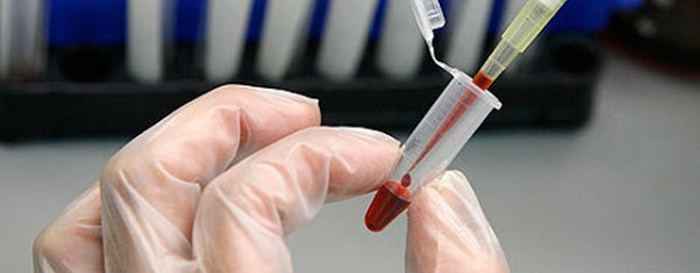
Atherogenic coefficient
- KA \u003d (TC - HDL cholesterol) / LDL;
- KA = LDL cholesterol / HDL cholesterol.
The formulas show that in order to determine the coefficient of atherogenicity, it is necessary either to divide the difference between total cholesterol and HDL by LDL cholesterol, or immediately find the quotient of "bad" and "good" cholesterol. The resulting value is decoded according to the following criteria:
- If KA is less than 3, then the development of atherosclerosis has minimal risk.
- If the CA is in the range from 3 to 4, then the likelihood of developing atherosclerosis or cardiac ischemia is high.
- If the CA is greater than 5, then the risk of atherosclerosis is the highest. In addition, vascular pathologies, diseases of the brain, heart, kidneys or limbs may develop.
What to do if LDL cholesterol is high or low
If cholesterol is higher than normal, then the reasons for this may be:
- liver pathology;
- endocrine diseases, for example, diabetes;
- metabolic disorders;
- smoking and overuse alcohol;
- obesity;
- unbalanced diet;
- sedentary lifestyle;
- increased blood pressure.

You can correct the situation and bring cholesterol back to normal with the help of special diet, physical activity and medications. The latter begin to take already in more severe cases. Sports activities can be short jogging or walking. Concerning taste preferences, then you will have to refuse:
- hard cheeses;
- mayonnaise and other fatty dressings;
- sausage products;
- baking and confectionery;
- cream, sour cream;
- semi-finished products;
- vegetable oils;
- fatty meats.
Instead, you need to use freshly squeezed juices, fresh fruits and vegetables, sea fish, especially salmon and sardine. It is better to cook food by baking or steaming. Of the drinks, green tea can lower cholesterol. Wine can also cope with this function, only red and in reasonable doses. Lowering LDL is a consequence of low-calorie diets, therefore, in addition to the diet, it does not require special treatment.
Among medicines for high cholesterol, statins are more commonly used, for example, Lovastatin, Atorvastatin, Fluvastatin or Rosuvastatin. This substance can reduce the production of enzymes. Some plants also contain statins. These include St. John's wort, hawthorn, fenugreek, lemongrass, Rhodiola rosea. You can use them in decoctions or tinctures.
Video about good and bad cholesterol
Low density lipoproteins are essential for the body. They are involved in many reactions, but they are called “bad fats”, since when increased amount they lead to various complications.
It is the LDL indicator in the blood that is an indicator of an incipient heart attack and other cardiac pathologies. This analysis is recommended to be taken regularly for everyone for prevention.
Low density lipoproteins: meaning and diagnosis
LDL are protein compounds that carry cholesterol from to the cells and tissues of the body. Cholesterol (or cholesterol) is necessary for the body, it is involved in metabolic processes, is part of the cell membrane. However, it is LDL that carries the "bad" one, which can lead to the formation of cholesterol plaques.
Cholesterol does not dissolve in water, so lipoproteins, special protein compounds, are used to transport it. At the same time, cholesterol is placed in a special protein shell, which allows you to move it to the right place.
Low density lipoproteins are elevated when the body fails. The reason for this can be both heredity and malnutrition.
To determine the level of LDL in the blood, you must come to the laboratory in the morning on an empty stomach and donate blood from a vein.
This analysis is called a lipidogram. During the diagnosis, the level of total cholesterol, low-density lipoprotein, high-density lipoprotein, triglycerides is determined. No special preparation is required, but it is recommended not to abuse fatty foods, alcohol, and also refuse to take medicines(after consulting a doctor).
The blood sampling process itself is quick and painless. You may experience dizziness during the blood sampling process, but it quickly passes after the procedure, it is enough to sit for 5 minutes. The result will be ready within 1-2 days.
Useful video - How to lower blood cholesterol levels:
The norm of low-density lipoproteins in the blood depends not only on the age, but also on the gender of the patient. In women, the level of LDL may be slightly elevated, and the figure also increases over the course of life. In adulthood, the level of LDL in men is slightly higher than in women, and after the age of 50 it is lower.
In children and adolescents before puberty, LDL-C is 60-140 mg/dl in men and up to 150 mg/dl in women. Then LDL levels may rise. By the age of 30 upper bound the norm reaches 190 mg / dl. By the age of 70, the figure can increase significantly. The norm for women from 60 to 70 years old is 100-235 mg / dl, for men - 90-215 mg / dl.It should be remembered that LDL levels rise during pregnancy. You need to take a lipidogram no earlier than at the 6th week of pregnancy in order to get a reliable result.
Causes and signs of increased LDL levels in the blood

The most common reason for high blood cholesterol levels is thought to be nutrition, but in fact there can be quite a few reasons.
It is possible to reliably determine or suggest the cause of an elevated LDL level only after a thorough examination of the body and the identification of other pathologies:
- cholestasis. With cholestasis, bile production and its entry into duodenum. The causes of the disease are lesions and hormonal disruptions. In this case, the metabolism is disturbed, and the level of LDL increases.
- Renal failure. Many kidney diseases lead to an increase in cholesterol in the blood. With insufficient kidney function, toxins are not excreted from the body, all organs begin to suffer, which leads to metabolic disorders.
- . Violation of the production of hormones affects all systems and organs. Metabolic disorders and elevated blood levels are frequent symptoms hypothyroidism (reduced production of hormones T3 and T4).
- . Cholesterol is involved in the production of various hormones in the body, so its level is associated with hormonal disorders such as insulin production in diabetes mellitus.
- Alcoholism. The relationship between cholesterol levels and alcohol has long been proven. Increased alcohol consumption does not lead to an increase in total cholesterol, but in LDL and triglycerides, which affects the condition of the liver.
- Obesity. Excess weight, as a rule, always coexists with high cholesterol levels, as well as heart problems. Primary obesity caused by malnutrition leads to an increase in LDL levels and an increased risk of plaque formation.
A slight increase in LDL may not be accompanied by any symptoms. As a rule, with an increase in this indicator, the patient begins to have heart problems, shortness of breath, angina pectoris, pain in the legs. Yellow spots on the skin may also appear, which indicate cholesterol deposits in the blood. This symptom often appears with a hereditary high level of LDL.
Enhanced Level LDL can lead to thrombosis.
Blood clots form in the veins and arteries, causing blockage and poor circulation. This is accompanied by pain, swelling and redness of the skin.
 Treatment depends on the cause of the elevated LDL levels. If the root cause is a disease, treatment is aimed at eliminating it, after which the LDL level will return to normal.
Treatment depends on the cause of the elevated LDL levels. If the root cause is a disease, treatment is aimed at eliminating it, after which the LDL level will return to normal.
If the patient’s lifestyle is to blame, then the problem can be solved without medication, but only with the help of diet and exercise.
Methods for normalizing LDL levels:
- For high cholesterol effective reduction prescribe statins. These drugs block the liver enzyme responsible for the production. Statins are prescribed to prevent atherosclerosis (blockage of blood vessels and arteries with cholesterol plaques). These drugs can lead to a number of side effects: constipation, headaches, work disturbances, etc. These drugs include fluvastatin, pravastatin. The doctor should prescribe such drugs and cancel them.
- If the patient is observed, additional drugs are prescribed to normalize the level of blood pressure. Aspirin may also be given to prevent blood clots. This drug also has many contraindications and side effects.
Diet can be an additional therapy or the main method of treatment. Nutrition with elevated LDL levels is based on several principles:
- Minimum animal fats. To lower cholesterol, you need to reduce the consumption of fatty meats, abandon fried meat dishes. Fatty beef, pork, lamb should be completely excluded from the diet.
- More fibre. Helps lower cholesterol levels vegetable fiber: cereals, bran, fresh fruits, vegetables, greens. Whole grains, multi-cereal breads are especially useful.
- Low fat dairy products. Milk is undoubtedly useful for high cholesterol, but it is advisable to choose dairy products, low-fat milk, low-fat cottage cheese.
- Rejection bad habits. It is necessary to exclude fast food from the diet, forget about the habit of eating on the go and having a snack in a cafe, stop smoking and drinking alcohol.
- Vegetable oil. It is advisable to replace fatty butter with natural olive, sunflower, corn, linseed, but use it cold, and not when frying.
Possible Complications

As is known, high cholesterol leads to various complications associated with the work of the cardiovascular system. Most often, elevated LDL levels occur in older people, after 50 years.
The most common consequences of high cholesterol include the following diseases and conditions:
- Atherosclerosis. it chronic illness, in which cholesterol plaque forms in the vessels and arteries, which then turns into a plaque and leads to blockage of the arteries, circulatory disorders. Along with the plaque, a thrombus can also form, which further narrows the lumen of the artery. The disease develops slowly, for several years the symptoms may not appear, but the process is irreversible. Most often, treatment is performed surgically.
- Myocardial infarction. Myocardial infarction is considered one of the deadly diseases. In this condition, the delivery of blood to the heart stops. AT acute form heart attack can lead to lethal outcome. According to statistics, with acute myocardial infarction, only half of all patients survive to hospitalization. The age of patients with this diagnosis is decreasing, and this moment you can meet a heart attack in thirty-year-old people.
- Cardiac ischemia. This disease often accompanies atherosclerosis. In this condition, there is a lack of oxygen in the tissues of the heart. It can be asymptomatic, and also lead to a heart attack and sudden death. Symptoms of the disease increase gradually. They may begin with shortness of breath and chest pain, progress to heart failure, sharp rise pressure.
- Thrombophlebitis. Elevated cholesterol often leads to the formation of blood clots in the veins and blood vessels. At the same time, they become inflamed, the walls stretch and deform. The legs begin to hurt, varicose veins, redness of the skin appear.
To avoid such complications, you need to monitor your diet, lead a healthy lifestyle, and also annually take a lipid profile for prevention. Prevention is especially important in the elderly.
Noticed an error? Select it and click Ctrl+Enter to let us know.
Low density lipoproteins (LDL) are the most atherogenic class of blood lipoproteins, which are formed from very low density lipoproteins. Their main function is to transport cholesterol from the liver to the cells and tissues of the body, so their presence in the blood is so important for the normal functioning of the body.
However, if the level of low-density lipoproteins is increased, this poses a certain threat to human health, especially to its cardiovascular system, therefore the second name for these components in the blood is. The small size of these lipoproteins allows them to freely penetrate through vascular wall, but with an increase in their concentration in the blood, they are able to linger on the vascular endothelium, accumulating there in the form of cholesterol plaques.
Determining the level of LDL is carried out to establish the risk of developing atherosclerosis and other serious illnesses. But in order to fully assess the processes occurring in the body, doctors recommend considering low-density lipoproteins in combination with other cholesterol fractions.
How to determine the level of LDL?
To determine the concentration of low-density lipoprotein, the patient needs to make a lipidogram, the material for which is deoxygenated blood. This analysis will show not only the level of LDL, but also other important indicators for assessing lipid metabolism in the body and the risk of developing vascular and heart pathologies. In particular, the atherogenic coefficient is calculated, which determines the ratio of HDL and LDL in the blood and, based on these data, shows the risk of atherosclerotic vascular changes.
The patient should know that before passing such an analysis, one should not eat very fatty foods per day, perform heavy physical work. Last reception food before donating blood for research should be no less than 12 hours, but no later than 14 hours. Taking certain medications can also distort the results of the lipid profile, so this issue must be discussed with the doctor directing the study, and indicate the drugs and their dosage that the patient is currently taking.
Assessing the level of LDL in the blood
Low density lipoproteins most affect the level of total cholesterol in the blood, since LDL is the most atherogenic fraction of cholesterol. Therefore, studying the lipid profile of a particular patient, doctors pay great attention to this particular indicator. When evaluating it, the individual characteristics of the body are taken into account, therefore, for different categories of people normal values LDL and their deviation from the norm may differ slightly.
So, for a patient 20-35 years old without pathologies of the cardiovascular system and normal index body weight estimate of the level of "bad" cholesterol in the blood will look like this:
As a rule, the LDL level, defined as high or very high, poses a particular health hazard. In this case, its immediate adjustment is required, for which the patient is prescribed medications and is recommended to adjust the lifestyle. If a quantitative indicator LDL above 4.14 mmol / l, there is some likelihood of narrowing of the lumen of the vessels and the development of atherosclerosis. If the indicator exceeds 4.92 mmol / l, this probability increases significantly.
In other cases, serious intervention is not required, you may only have to slightly adjust your daily diet and engage in feasible physical activity. Therefore, LDL values \u200b\u200bbelow the critical level of 4.92 mmol / l are referred to by physicians as variants of the norm, since the indicator of “bad” cholesterol in the range of 4.14-4.92 mmol / l may be due to lifestyle characteristics or hereditary factors.
Low density lipoproteins: normal
Until a certain point, it was believed that the lower the level of low-density lipoprotein, the better. But in the course of numerous studies, it has been proven that if the level of LDL is lowered, this may also indicate pathological processes flowing in the body. Therefore, a range of values was established - the norm of low density lipoproteins in the blood, which characterizes normal lipid metabolism in the body and indicates a low risk of developing cardiovascular pathologies.
It is worth noting that the LDL norm in women and men is slightly different. This has more to do with the difference hormonal background, which affects the metabolic processes in the body.
The age of the patient, the presence of certain diseases in his anamnesis (mainly pathologies of the heart or blood vessels), weight, taking certain medications and some other features that are discussed with the attending physician on an individual basis are also taken into account.
The following table shows the rate of "bad" cholesterol, i.e. LDL for women of different age categories:
For men, low-density lipoproteins are within the following range (taking into account age):
With age, the production of cholesterol by the liver increases, which is associated with hormonal changes that occur in the body of men and women after 40 years. Therefore, the critical level of LDL is shifted to big side. But after 70 years metabolic processes are no longer subject to such influence of hormones, so the norm of "bad" cholesterol becomes the same as in young people.
If a patient is diagnosed with problems with the heart, blood vessels, pancreatic function, he has a risk of CVD or has a high level of cholesterol in the blood, he needs to strive for a lower limit of the LDL norm - less than 3 mmol / l. The same recommendation applies to those patients who, on the background of high cholesterol already developed coronary heart disease. Such patients should be registered with a cardiologist and regularly monitor the level of cholesterol in the blood.
LDL elevated in the blood
For women, the level of lipoproteins in the blood above 4.52 mmol / l and for men above 4.92 mmol / l is considered too high. This means that a patient with such indicators has an increased risk of developing pathologies in the work of the heart and blood vessels.
The reasons for the increase in low-density lipoproteins in the blood are usually an unhealthy lifestyle or diseases of various organs and systems. So, the frequent culprits for the development of such a process in the body are:
- unhealthy diet: frequent consumption of processed foods, foods rich in trans fats and saturated fats (hard cheeses, red meat, lard, confectionery, cream, cookies, etc.), margarine, mayonnaise, chips, fried and fatty foods naturally leads to an increase in "bad" cholesterol in the blood;
- sedentary lifestyle: hypotension negatively affects many processes in the body, including hormone production, heart function, etc. It has been proven that the lack of regular physical activity leads to a decrease in the production of high-density lipoproteins and an increase in LDL in the blood;
- obesity: this is one of the main factors in the development of cardiovascular pathologies, which accordingly affects the level of "bad" cholesterol in the blood. Especially dangerous are the "accumulations" of fat on the abdomen;
- medications: some medications can worsen, i.e. lower the level of "good" cholesterol and increase the level of "bad". These drugs include anabolic steroids, corticosteroids, hormonal contraceptives and some others;
- heredity: such systemic disease, like familial hypercholesterolemia, is inherited and increases blood cholesterol.
High levels of LDL in the blood - hyperlipidemia - can be triggered by serious diseases:
- Endocrine disorders: malfunction thyroid gland, pituitary, ovaries in women.
- Genetic disorder of fat metabolism.
- Anorexia nervosa.
- Diseases of the liver and kidneys, chronic renal failure.
- Arterial hypertension.
- Stones or stagnant processes in the gallbladder.
- A malignant tumor localized in the pancreas or prostate gland in men.
- Cushing's syndrome.
Another important reason for the increase in LDL levels is a violation of metabolic reactions in the body, which is associated with the function of capturing various blood compounds by the cells of the body. Cholesterol produced by the liver is not delivered to the tissues of the body, but settles on vascular endothelium, because of which the liver begins to produce cholesterol in even greater volumes.
It should be noted that high levels of "bad" cholesterol are physiological norm for pregnant women, which is associated with complex hormonal changes in the body during this period.
Why is high LDL dangerous?
Low-density lipoproteins are the most atherogenic fraction of lipids in the blood, therefore, at their high level, there is a risk of developing vascular and heart diseases, primarily atherosclerosis. In such patients, cerebrovascular disease, deformation of the structure of the heart, and other serious pathologies that require immediate treatment to avoid.
The mechanism of development of all the consequences of a high level of "bad" cholesterol is identical: cholesterol settles on the walls of blood vessels in the form of clots, while the first to suffer coronary arteries. Such plaques grow in size and greatly impede blood flow, thus disrupting the normal functioning of organs and body systems.
The greatest danger of increasing total cholesterol and LDL in particular lies in the fact that a person cannot detect in the first stages of this process developing pathologies, since the characteristic symptoms in most cases are absent. Therefore, after 30 years, doctors recommend annually taking a lipid profile. If the patient falls into a risk group (heredity, increased body weight, etc.), then such an analysis should be done more often according to the indications of the attending physician.
Critical LDL can cause the development of the following adverse health conditions:
- Atherosclerotic changes in the heart. In this case, there are signs of angina pectoris, when the body does not receive the necessary amount of oxygen for its normal operation.
- Cardiac ischemia. This is the most frequent complication that occurs against the background of high cholesterol in the blood. If you lower it in time, you can save heart health and prevent a heart attack. High levels of LDL are especially dangerous for women during menopause, when a serious hormonal change occurs in their body. Cholesterol is more actively deposited on the walls of blood vessels, which leads to many problems with blood vessels and the heart. Therefore, women after 45 years of age should be regularly observed by a cardiologist and take the necessary tests.
- Diseases blood vessels. This pathology can also be easily determined by the patient himself: when performing any physical exercises, tangible pain appears in the limbs, even lameness may occur. This symptom is associated with a deterioration in blood circulation in the limbs themselves due to blockage of their vessels with cholesterol plaques.
- Decreased blood supply to the brain. With the breakdown and sedimentation of cholesterol from LDL, the small arteries of the brain noticeably narrow, and larger ones can be completely blocked cholesterol plaques. Such a process in the brain can provoke a sharp decline blood circulation, which is fraught with the occurrence of a transient ischemic attack.
- Narrowing of the lumen of other arteries in the body (renal, mesenteric, etc.) can also cause severe complications. Thus, the deterioration of blood circulation in renal arteries can lead to aneurysm, thrombosis or stenosis.
- Acute myocardial infarction and cerebral stroke. Both of these pathologies are associated with the formation of a blood clot that completely blocks the blood supply to the heart or brain.
It is worth understanding that cholesterol plaque can at any time come off and completely clog the vessel or artery, leading to death. Therefore, it is so important to regularly check and maintain the level of cholesterol in the blood (in particular, LDL) within the normal range.
How to lower LDL in the blood?
To achieve this goal, it is necessary to approach the problem comprehensively, taking into account individual characteristics organism. At the same time, it is important to establish lipid metabolism in the body, that is, to reduce the level of LDL and increase HDL. To do this, follow the following recommendations of doctors:
- Moderate exercise. Moderate - this means feasible for each patient on an individual basis, i.e. one will be recommended daily jogging for 30-40 minutes, while others are allowed only 40-minute walks at a normal pace. The main criterion for evaluating "moderation" is an increase in heart rate: during physical activity, it should not rise by more than 80% of the usual rate.
- Proper nutrition. You need to eat food in small portions, but often. Avoid fatty, spicy, canned foods, processed foods, all fatty meats and dairy products, eggs, animal fats, cheese, pastries, sweets. Give preference to products with low glycemic index, cereals rich in coarse insoluble fiber, fresh vegetables, berries and fruits, low-fat dairy products, sea fish, lean meats, green tea. Today it has been established that there are products whose daily use can normalize the ratio of "good" and "bad" cholesterol:
- garlic;
- cabbage;
- apples;
- avocado;
- nuts;
- cereals;
- corn oil;
- sunflower seeds.
To achieve stable normalization of lipid metabolism, you need to reset excess weight. This recommendation applies especially to patients with elevated index body weight.
At the same time, foods containing cholesterol cannot be completely excluded: this can further disrupt the metabolic processes in the body. It is better to follow a balanced diet recommended by a doctor on an individual basis.
- Quit smoking and stop drinking alcohol. These bad habits lead to the oxidation of LDL breakdown products in the blood, which leaves a residue on the walls of blood vessels and cholesterol plaques begin to form.
In addition, it is imperative to eliminate the cause that can lead to the fact that low-density lipoproteins increase: these can be both alimentary factors (abuse of fatty foods, physical inactivity, etc.), and serious illness requiring special treatment.
If the described methods do not give a pronounced result, the cardiologist will prescribe a special treatment using medications. AT complex therapy may be assigned:
- statins;
- fibrates;
- a nicotinic acid;
- nutritional supplements enriched with omega-3 fatty acids;
- cholesterol absorption inhibitors;
- bile acid sequestrants.
Taking medications in combination with the above described therapy will lower the level of LDL in the blood and normalize fat metabolism in the body. If after the treatment you follow the basic recommendations for healthy lifestyle life, it may be possible to keep cholesterol within normal limits without medication.
LDL lowered
When the level of LDL is elevated, it is always alarming for both doctors and patients themselves, who are aware of the dangers of high cholesterol. But if this indicator is below the norm, is it worth worrying or can such a test result be ignored?
If LDL is below 1.55 mmol / l, an experienced doctor will always prescribe additional examinations and refer you for a consultation with several highly specialized specialists in order to detect other diseases not related to fat metabolism in the body. So, in a patient with a low low density lipoprotein, the following diseases can be detected:
- chronic anemia;
- cirrhosis of the liver;
- liver cancer;
- myeloma;
- chronic heart failure;
- chronic lung diseases, more often obstructive changes in their tissues;
- Raynaud's syndrome;
- acute stress requiring medical intervention;
- joint diseases (in the acute stage), for example, arthritis;
- sharp infectious diseases, sepsis, blood poisoning.
In the latter case, there are usually severe symptoms that provoke the patient to seek medical help in time.
In addition, in a patient with low content The following conditions can be observed in the blood LDL:
- Hyperthyroidism.
- Hypobetaproteinemia.
- Deficiency of enzymes: alpha lipoproteins, lipoprotein lipase, lecithincholesterol acyltransferase.
- Abetaproteinemia.
The most innocuous reason leading to a persistent decrease in LDL may be a diet poor in foods with moderate or high content rich fatty acids and cholesterol. In this case, the doctor will recommend adjusting the diet: he will calculate the allowable portions of cholesterol-containing foods that will need to be consumed daily, taking into account the usual diet.
Doctors should be consulted not only when LDL levels are elevated, but also when “bad” cholesterol is below normal. In both the first and second cases, there is a risk that the patient has already developed some diseases that need urgent treatment.
Decreased - what does it mean? Many believe that a high content of this substance in the blood leads to undesirable consequences, but scientists have shown through research that its lack is also highly undesirable for the adequate functioning of the body, so what can happen if LDL cholesterol is lowered?
Pure cholesterol cannot completely dissolve in plasma, so it moves through it in the composition with complex compounds. These include lipoprotein, which is classified into several types, depending on the structure of the substance.
What does low cholesterol lead to?
2 types of insufficient content of the component in the body are determined.
These include:
- hypocholesterolemia - common low rate in blood;
- hypolipoproteinemia - reduced level lipids in blood plasma.
Low concentration of cholesterol is a great threat to the health of the human body. Experts have found that the risk of death from cancer in people with reduced content this component significantly exceeds those who have it at a high level.
Important! Reduced cholesterol levels in combination with alcohol abuse, regular smoking or addiction to narcotic substances cause serious mental pathologies: aggressiveness, suicidal behavior and senile senility.
San Francisco researchers have conducted long-term follow-ups of people over the age of 20 with cholesterol levels below 4.6 mmol/L (180 mg/dL).
As a result, it turned out that:
- the possibility of a stroke increases by 2 times;
- the risk of depression and suicidal tendencies increases by 200%;
- risk of increased predisposition to use narcotic substances and dependence on alcohol increases by 500%;
- the risk of developing oncological pathologies of the liver increases by 3 times.
The reasons for such cardinal deterioration in the state of health of psychological and physical origin is the low level of LDL in the body.
The concept of LDL
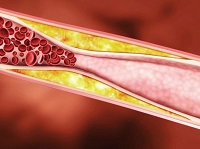 This type cholesterol is a lipoprotein, the density of which is very low. Its content in blood plasma is determined using LDL cholesterol. If its level is high, its excess materials will be deposited on the vascular walls of the circulatory system. As a result, these accumulations will interfere with the normal flow of blood and oxygen, which causes coronary artery disease and atherosclerosis.
This type cholesterol is a lipoprotein, the density of which is very low. Its content in blood plasma is determined using LDL cholesterol. If its level is high, its excess materials will be deposited on the vascular walls of the circulatory system. As a result, these accumulations will interfere with the normal flow of blood and oxygen, which causes coronary artery disease and atherosclerosis.
LDL includes up to 70% of all present in human body cholesterol. Due to the tiny volumes of lipoproteins, which vary in diameter from 21 to 25 nm, they can freely enter the vessels. And compared to HDL, which by its nature is quickly excreted from the walls of blood vessels, LDL cholesterol stops in them, forming growths on their lateral sections.
Due to the B-apolipoprotein present in the substance, which tends to combine with the vascular walls, it is poorly excreted. This supplies the vascular network with cholesterol, and with a decrease in functionality, there is an excess of it in the blood supply system.
What causes cholesterol levels to drop?
The reasons for the appearance of LDL are not yet fully understood by experts. However, most scientists who have conducted a number of observational studies are confident that all kinds of violations of liver function can cause a decrease in cholesterol concentration, since the synthesis of the substance occurs directly in this organ.
And from him normal operation depends on the production of "good" cholesterol. Also this phenomenon provokes the absence of fats in the food consumed by a person.
Causes of low cholesterol levels:
- Predisposition to this factor at the genetic level.
- Nutritional disorders: anorexia, strict diets, prolonged fasting, malnutrition during sports, vegetarianism.

- Constant depression and stress.
- Fever in diseases of an infectious nature.
- Diseases that disrupt the absorption of consumed foods.
- High thyroid activity.
- Poisoning the body with heavy metals.
- Anemia of various kinds.
All these phenomena can seriously lower LDL, which in the end can lead to unwanted complications.
Signs of deviations
There is no way to independently determine the concentration of cholesterol in the blood of a person. This can only be known through biochemical analysis.
But if the patient has not been examined for a long time, and other pathologies have developed against the background of this deficiency, then the symptoms may be as follows:
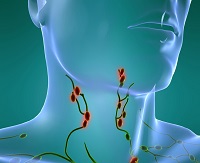
- loss of appetite or its complete absence;
- causeless depression or aggression;
- lowering the threshold of sensitivity;
- decrease in sexual desire;
- swelling of the lymph nodes;
- fatty stools during bowel movements;
- muscle weakness.
These deviations are symptoms of emerging diseases due to low cholesterol levels. When they appear, you should immediately contact a specialist who will help determine the therapy, based on individual indicators.
The decision on the measures taken to treat the disease should be taken by the doctor, based on the diagnostic picture. Since patients usually seek help when symptoms low cholesterol become pronounced and caused by other pathologies.
Then the doctor determines what kind of ailment the patient has, and prescribes the appropriate treatment measures simultaneously with the compiled menu to increase cholesterol levels.
Cardiovascular diseases associated with atherosclerosis of the arteries are widespread throughout the world in men and women. One of the most important reasons the development of a similar situation - an increase in LDL (low density lipoprotein) and cholesterol due to the spread of malnutrition with a lot of fat.
Identification of people with similar deviations in biochemical analysis blood is the most important point in the early prevention of coronary heart disease, myocardial infarction, circulatory encephalopathy and other serious diseases. Typically assigned timely treatment and diet allow you to adjust the level of LDL, cholesterol and provide an increase in the duration and quality of life in the patient.
About cholesterol and lipoproteins
A large number of myths and prejudices exist in such a simple substance as cholesterol. Many people consider it the number one enemy for their health, however, in reality, everything is far from it. Cholesterol is a fatty alcohol necessary for the normal functioning of cells, which must constantly enter our body with food.
Cholesterol does a very important function for the body
Its main biological roles the following:
- Maintaining the integrity and structure of cell membranes.
- Participation in the formation of sex and other steroid hormones.
- The amount of cholesterol in the body determines the efficiency of the metabolism of fat-soluble vitamins A, E, D, K, etc.
- Participates in the creation of sheaths around nerves, etc.
Cholesterol is an essential component of living organisms, so it is not bad on its own.
Based on the foregoing, cholesterol itself does not pose a danger to human health. You should take a closer look at lipoproteins, which are most often associated with various diseases. There are two main classes of lipoproteins:
- Low and very low density lipoproteins (LDL and VLDL, respectively). This fraction of fats is of key importance in the development of diseases of the heart and blood vessels, since it is involved in the transport of fats from liver cells to other organs and vessels. This contributes to the development of atherosclerosis and related complications.
- High-density lipoproteins (HDL), on the contrary, prevent the formation of atherosclerotic plaques, ensuring the transport of lipids from the walls of blood vessels to the liver, where cholesterol can be used for its intended purpose.
These indicators in plasma are determined using biochemical studies. The norms of cholesterol in the blood in men and women vary significantly, ranging from 3.6 to 5.5 mmol / l, depending on the specific laboratory. These figures mean that a person has no disorders in lipid metabolism and treatment is not indicated for him.
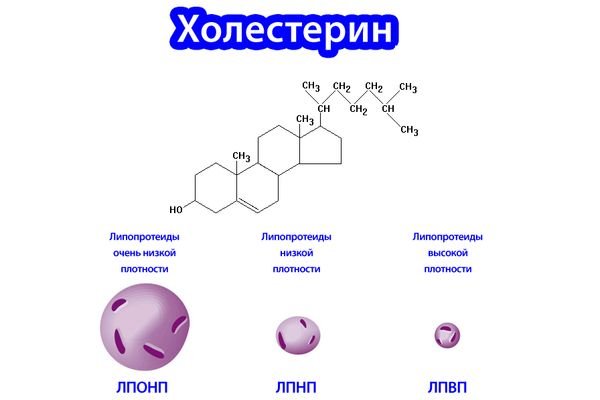
In order to correctly decipher the blood test, one should take into account what is the norm of cholesterol in the blood of a person
If the cholesterol level is above normal, i.e. more than 5.6 mmol / l, then it is necessary to conduct an additional determination of lipoprotein indicators to clarify the metabolism of fats in the body.
Normal values of lipoproteins in the blood:
- HDL - 0.8 - 1.8 mmol / l. In this case, the upper limit of the norm is higher, the higher the age of the person.
- LDL should be less than 4.1 mmol / l, since their increase above this indicator is often regarded as a pathology.
It is important to clarify the norm indicators for all analyzes at the diagnostic institution where the study was conducted, since they may vary slightly. Apart from increase LDL An important prognostic value is the determination of the level of atherogenicity, which is calculated as follows:
Atherogenic coefficient \u003d (cholesterol - HDL) / HDL

Low-density lipoprotein (LDL) is one of the most atherogenic lipids, which performs the function of transporting cholesterol.
Normally, the indicator should be as follows:
- In newborns, the coefficient should not exceed one.
- In men aged 18-30 years - less than 2.4.
- In women aged 18-30 years - less than 2.2.
- In older age groups, the coefficient should be less than 3.6.
LDL cholesterol can be calculated using the Friedwald formula:
- LDL = total cholesterol- (HDL + TG / 2.2).
This method allows to quantify lipids.
Any deviation of analyzes from the norm (high LDL cholesterol, low HDL value, etc.) should be the reason for contacting medical institution to your doctor.
The attending physician should interpret the test results. You shouldn't be doing this on your own.
Causes of high LDL and cholesterol
The causes of elevated LDL in the blood are varied and include the following factors:
- Errors in the diet associated with eating fatty foods, especially those high in saturated fats - cream, margarine, little, fatty meats, sausages, lard, etc.
- Smoking can increase LDL levels. In addition, nicotine independently negatively affects the vascular wall, increasing the risk of atherosclerosis.
- excess weight and low level physical activity leads to a decrease in the amount of high density lipoproteins and a high amount of LDL cholesterol.
- Diseases with a hereditary component can also affect the metabolism of fats and lead to changes in their fractions in the blood.
These reasons are the main risk factors for the development of a situation in which blood cholesterol (LDL) is elevated. Therefore, the treatment of such disorders should always be accompanied by the correction of these features of the patient's life.

Cholesterol itself does not cause obesity.
Why are high cholesterol and LDL dangerous?
If a person has high cholesterol and LDL, what does this mean? Such patients have the highest risk of developing a number of diseases of the cardiovascular system:
- Atherosclerotic vascular disease, which is a disease in itself, but at the same time causes damage to various organs.
- Ischemic heart disease is observed in such patients several times more often. Its formidable complication is myocardial infarction, leading to the development of a life-threatening condition in the patient.
- Stroke and transient ischemic attacks are much more common in patients whose cholesterol and LDL cholesterol levels are elevated.
All of these diseases are constantly progressing, leading to a decrease in the quality of life of people and posing a serious threat to them. What to do in these situations?
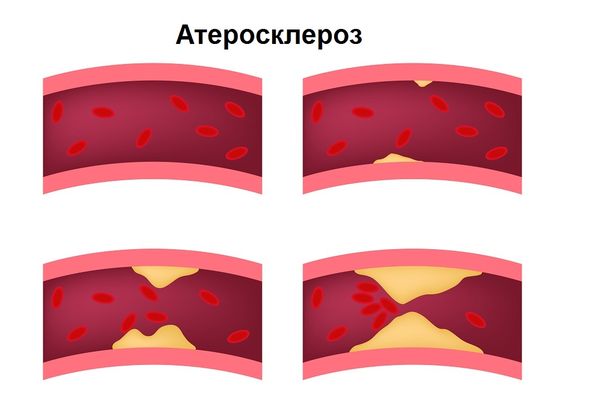
With an increased concentration of LDL, the risk of developing severe vascular pathologies, ischemia and atherosclerosis increases.
Treatment
Therapy for people with high levels cholesterol and low-density lipoprotein is divided into two large kind: drug and non-drug.
You can use medicines only after consulting with your doctor and conducting a full clinical examination.
Non-drug treatment
This type of therapy is aimed at correcting a person’s lifestyle, since in most cases, with minor deviations in the analyzes, these measures are enough to reduce cholesterol and LDL levels in the blood. Patients are recommended:
- Regular exercise of low and medium intensity.
- Increasing the content in the diet of vegetables, fruits, dishes from them and avoiding foods high in fat.
- Normalization of sleep and rest.
- Fight overweight and obesity.
- Refusal of bad habits - smoking and drinking alcohol.
In many cases, the use of only non-drug treatment, allows you to cope with unpleasant symptoms and changes in analysis.
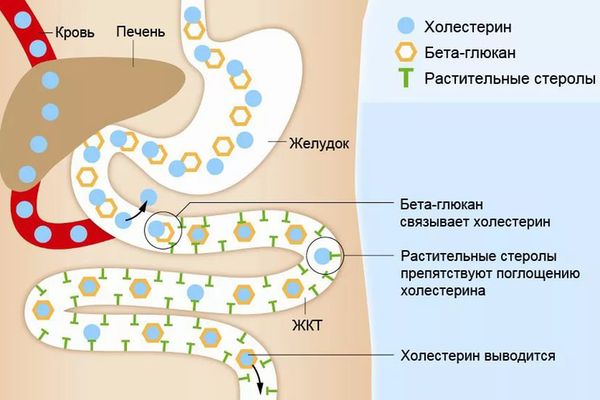
LDL is bad cholesterol
Medical therapy
In the absence of changes in the content of cholesterol and lipoproteins, the patient is prescribed special medicines that can affect lipid metabolism in the body:
- Statins block an important cholesterol synthesis enzyme, HMG-CoA reductase, and therefore the amount of lipid in the blood decreases significantly. At the same time, the concentration of LDL decreases and the number of HDL increases. The main drugs in this group: Rosuvastatin, Atorvastatin, Simvastatin, etc.
- Inhibitors of absorption of dietary cholesterol from the intestinal lumen - Ezetimibe, etc. These drugs show high efficiency and are easily tolerated by patients with constant medical supervision.
- Fibrates (Clofibrate, Gemfibrozil) have a complex effect on the exchange of LDL and VLDL, reducing the level of atherogenic lipoproteins.
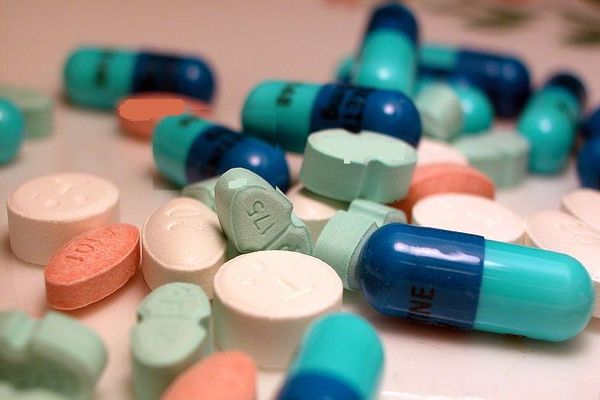
Statins, Inhibitors, Fibrates are medicines used to lower cholesterol levels
There are other classes of drugs, however, the three listed are prescribed in clinical practice most often.
An increase in cholesterol and low-density lipoproteins can cause the development of severe diseases of the cardiovascular system, up to myocardial infarction and stroke. Similar situation requires medical examination and prescribing treatment, both pharmacological and non-pharmacological.
